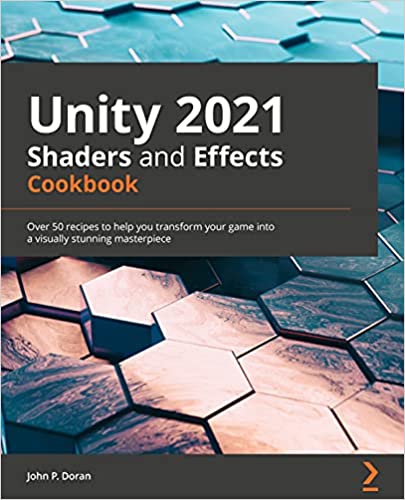John P. Doran is the author of Unity 2021 Shaders and Effects Cookbook, 2nd Edition, we got the chance to sit down with him and find out more about his experience of writing with Packt.
Q: What are your specialist tech area(s)?
John: Game Design and Development
Q: How did you become an author for Packt? Tell us about your journey. What was the motivation for writing this book?
John: I’ve been working with Packt in some capacity since 2012. I actually write books on the weekends as to not interfere with my day job and consulting work. As a technical game design educator, it is always important to make sure that I am at the forefront of technology. Writing books gives me a reason to constantly be learning new things and then distill them into an easy-to-understand format.
Q: What kind of research did you do, and how long did you spend researching before beginning the book?
John: Of course you want to do research ahead of time to make sure that you are targeting the right concepts that readers want to learn about, but research is kind of an ongoing process during the entire development of the book. As Unity continues to release new versions with new updates it is important to keep the book updated up until the final release.
Q: Did you face any challenges during the writing process? How did you overcome them?
John: The main challenge in the writing process is mainly in the distilling factor that I mentioned earlier. You don’t want to overwhelm readers, but want to make sure they understand as much as possible. That is one of the main benefits of the way that the Cookbook series of books at Packt’s work. They give readers steps to complete things but then go over how it actually works.
Q: What’s the take on the technologies discussed in the book? Where do you see these technologies heading in the future?
John: I see that Unity is currently at an interesting point. Right now there are several render pipelines that are available to users. In my opinion, it’s too early to abandon the build-in render pipeline which is why it is still important to learn as it makes learning the new ones much easier.
Q: Why should readers choose this book over others already on the market? How would you differentiate your book from its competition?
John: This book covers several different ways that shaders can be created. For those that just want to have something that looks good without having to deal with code, we introduce post-processing effects right from the get-go. We then deep-dive into the code-side of things and build several different shaders building on complexity over time. Finally, we touch on Shader Graph for both 2D and 3D projects utilizing both the SRP and HDRP. The book’s been updated and expanded from the previous edition to include new chapters.
Q. What are the key takeaways you want readers to come away from the book with?
John: Shaders give readers the power to improve their game projects in many different ways. By learning how to work with the GPU it is possible to have amazing graphical effects with minimal performance cost and is an incredibly useful skill to have for any budding game developer.
Q. What advice would you give to readers learning tech? Do you have any top tips?
John: Don’t try to read the entire book all in one go and don’t try to just reach a tech book. Actually doing the things while using the book is incredibly useful in actually building the muscle memory of knowing what the aspects of tech are actually doing.
Q. Do you have a blog that readers can follow?
John: Yes! My website is http://johnpdoran.com
Q. Can you share any blogs, websites, and forums to help readers gain a holistic view of the tech they are learning?
John: There are several great Unity blogs that I love to share with students. Sticking to written tutorials, Catlike Coding (https://catlikecoding.com/) has several great tutorials. Unity’s Learn platform (https://learn.unity.com/) also has been growing and can be useful. Ray Wenderlich’s team (https://www.raywenderlich.com/) also tries to cover several concepts as well. He’s no longer uploading videos but Brackeys (https://www.youtube.com/brackeys) still has some great videos for working with Unity as well.
Q. How would you describe your Author’s journey with Packt? Will you recommend Packt to aspiring authors?
John: Packt has always been great to work with and has been super helpful. Assuming you are happy with what they are offering you, I wouldn’t see a problem with writing with Packt.
Q.Do you belong to any tech community groups?
John: I am a member of the International Game Developers Association (IGDA) and I am a Certified Unity Instructor.
Q. What are your favorite tech journals? How do you keep yourself up to date on tech?
John: I have several RSS feeds that I follow using Feedly to make sure I’m up to date on news. It helps me go through several different sources in a quick manner.
Q. How did you organize, plan, and prioritize your work and write the book?
John: By separating my time focusing my weekends on the book and the weekday on my work really helped. My wife being very understanding was also incredibly useful.
Q. What is the one writing tip that you found most crucial and would like to share with aspiring authors?
John: When writing it is great to plan out the whole scope of the book from the start at a high level. That makes it so there’s never a question of what should be written and makes sure that both yourself and your publisher is happy with what is being created.
You can find John’s book on Amazon by following this link: Please click here









